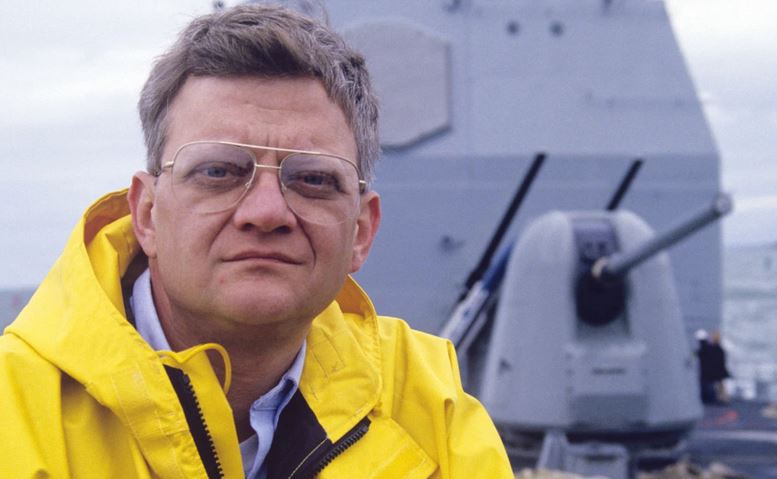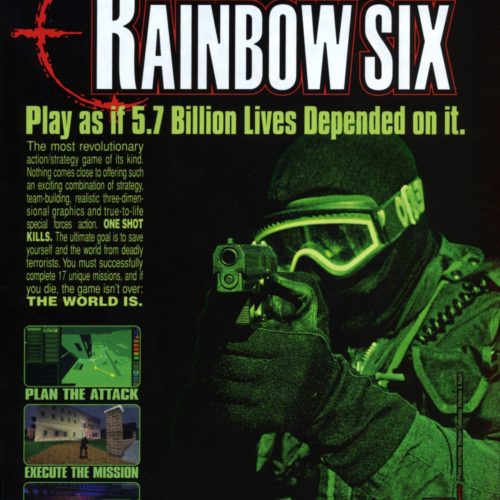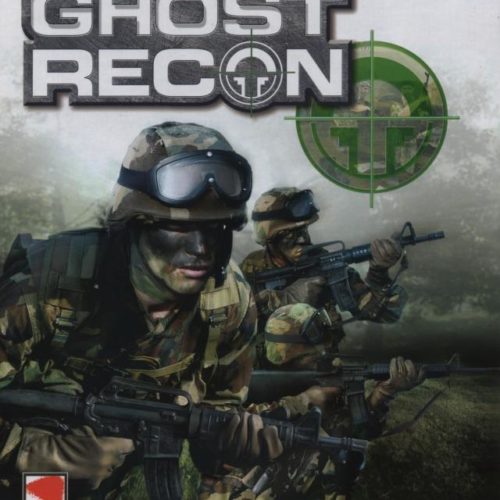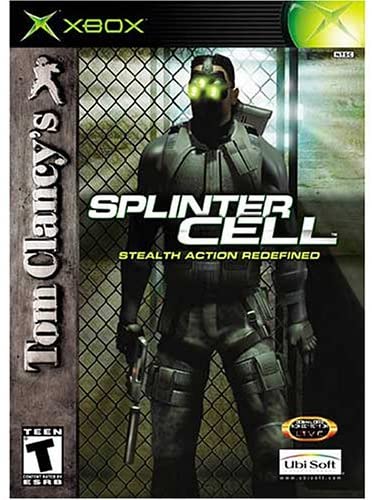The trailer of Rainbow Six: Extraction, looks to be far from the spirit of the license. In the trailer, players battle against alien fantasy monsters. I believe that this is an opportunity to tell newcomers to the Tom Clancy franchise who he was and why his name is attached to this shooter game in the first place.
He’s the inventor of the techno-thriller genre
Born in Baltimore, Tom Clancy was passionate about military issues and topics, but his poor eyesight prevented him from joining the army. Instead, he became an insurance agent, and began to write his first book, a novel inspired by the real story of a Russian anti-submarine frigate whose captain tried to start a mutiny against the Soviet Union in 1975. The Captain failed, was arrested for treason, and executed nine months later.
Under Clancy’s pen, the frigate was replaced with an undetectable top-secret submarine, and his book The Hunt for Red October (1984) became a bestseller that sold more than two million copies. The “techno-thriller” genre was born. In Clancy’s novels, the hero called Jack Ryan is followed over the course of the series. Ryan appears in 17 novels. The hero’s career evolves in an incredibly detailed military and technological world. Ryan finds himself at the heart of many geopolitical plots that seem remarkably plausible, even anticipating upcoming real-world events.
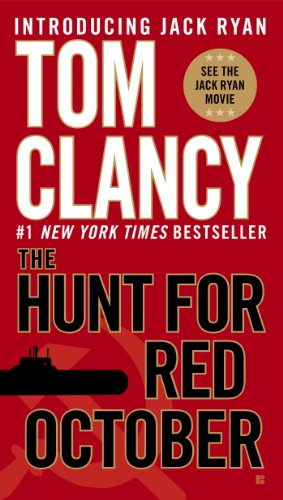
A Republican and an American patriot
Red October was released during the era of President Ronald Regan—the American President who decided to bring down the Soviet Union and the Warsaw Pact. Clancy’s novels are very pro-American and often portray Russia as the villains Americans should fight back against. This was much to the approval of the White House, who once stated that the author was the “greatest patriot of our time”.
Throughout his life Tom Clancy remained a genuine Republican and a patriot. His novel’s locations are set around the world and feature U.S. armed forces and intelligence services as the main heroes. Clancy told American centered military stories, except in his book Rainbow Six, which he created to be an anti-terrorist unit of NATO, also led by the Americans.

A style particularly suitable for cross-media
Tom Clancy novels were quickly adapted to the cinema. Several films became blockbusters, carried by leading actors, Harrison Ford, Sean Connery, Alec Baldwin, Kevin Costner.
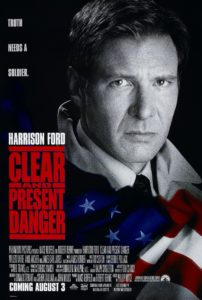
It is therefore quite natural that in 1996 Tom Clancy created the video game studio Red Storm in North Carolina. It was named after his second novel called Red Storm Rising. There he explored his universe in a new way. Purchased by Ubisoft in 2000, the studio is the origin of several major franchises which have left their mark in videogame history.

Rainbow Six (1998)
NATO’s counter-terrorism unit, comprised of task force members from various countries. The series is remembered by the fans who made it a success, for being extremely realistic. Especially in terms of accuracy of the shot, tactical planning, and the importance of the equipment.
The first game’s story is a perfectly plausible scenario based on a biological weapon that threatens the world. The comparison with modern era Tom Clancy games, such as The Division ends here. Rainbow Six is a realistic and difficult game, far from the total absence of tactical realism and authenticity of this looter-shooter from 2016.
Long considered the ultimate “SWAT simulator”, the R6 franchise eventually slid down toward the action shooter genre. Although the series lost its realistic features, fortunately the R6: VEGAS games were still driven by an extremely solid scenario. The story followed the turmoil of a Mexican crisis, as described in Tom Clancy’s Ghost Recon: Advanced Warfighter and a single mission in Tom Clancy’s H.A.W.X..
Tom Clancy’s Rainbow Six: Siege marks a major turning point for the series. A multiplayer game that breaks all the codes of Clancy, like authenticity, realism, and a plausible scenario. Ubisoft sought make an alternative to successful competitive games like CSGO, Overwatch, and Fortnite. The trend continues to this day with Rainbow Six: Extraction, which seeks to distance itself from the spirit of the Clancy franchise and its author.
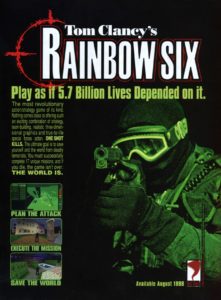
• Ghost Recon (2001)
They are a secret unit of the American Special Forces under the direct control of the American president and JSOC. The Ghosts are deployed in theatres of operation where the U.S. does not want to appear to be.
The scenario of the first GR is so realistic that it precisely anticipates the war that will oppose Georgia and Russia in 2008, and the following episodes focus on offering an extremely plausible geopolitical environment…At least until GR: Wildlands, and especially Breakpoint, (in which I modestly participated in making) which lose the essence of the Clancy heritage.
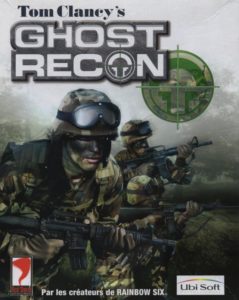
Splinter Cell (2002)
The series is less anchored in reality than the other Clancy games. Nevertheless, it gave rise to one of the most badass heroes is video games, Sam Fisher, as well as the modern infiltration game. At the time of its release Splinter Cell was considered the only true western competitor to Metal Gear Solid from Konami.
Alas, the series also gradually slides towards pure action, especially with SC: Conviction and Blacklist. It also distorts the will of its creator, Tom Clancy, and disappoints the fans that made it popular in the first place. Ubisoft’s recent announcements concerning Sam, or lack thereof, unfortunately do not reassure us on an authentic return of Sam’s Echelon team.
A legacy of disappointment
At this point, I am wondering why Ubisoft persists in making these cartoonish parodies of Tom Clancy games. Each new game takes the franchise further away from its original nature. The brand is heartbreaking for us original fans who dream of authentic Clancy games. I’ve met many gamers nostalgic for the Red Storm era, evoking R6: Rogue Spear. Who will ever forget its incredible soundtrack by Bill Brown? Or they fondly remember Splinter Cell 2 and even R6: Vegas games.
The worst part is that the true Clancy formula now flourishes apart from its author. Excellent infiltration games are competently made by competing game companies and have taken over the recipe of Sam Fisher. While the single-player modes of Call of Duty and Battlefield have overtaken the authentic techno-thriller genre, with all the exciting twists and turns that used to be made by Red Storm.
The announcement of Rainbow Six: Extraction received a bad reception and is now causing misunderstanding among the majority of players who wonder which direction the Clancy license is going. This crossroads is an opportunity for Ubisoft to disconnect from the Tom Clancy license and let it rest in peace with the author. Or else, push away from this sophomoric direction, put Tom Clancy back on his feet, and restore the nobility of the brand’s unique identity.
